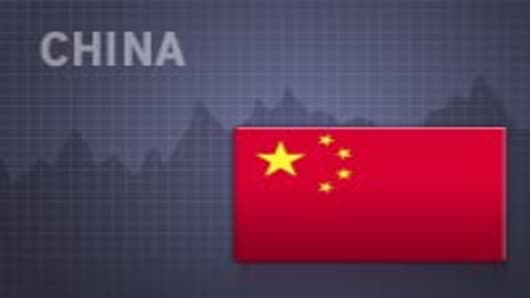According to the FT , China's central bank has told the heads of the largest state-controlled banks to slow the pace of new lending, say people familiar with the matter.
"The pressure from the People’s Bank of China signals an unstated shift in policy and comes as it steps up its open-market operations to control liquidity and slow loan growth."
As an example of the anticipated decrease, China Construction Bank has stated that they will decrease lending in the second half of 2009 by 70%.
Simultaneously, Premier Wen today said that the government is "persisting with implementing active fiscal policies and appropriately relaxed monetary policies" warning that the "impetus for self-sustaining growth in the economy is not strong". He said China will maintain its current macroeconomic policy stance aimed at bolstering domestic spending as the nation continues to experience fallout from the global recession, Premier Wen Jiabao said.
On the one hand, the central bank is telling banks to slow down lending. On the other hand, the PBOC is going to maintain it's easy monetary policy while the government maintains it's stimulative fiscal policy. The bank lending is high powered or high velocity money that has led to a large boost in domestic growth and related Pacific Rim growth by countries selling to China.
South Korea is the best example of a country benefiting from the pick up in regional growth.
Yonhap News reports that South Korea's second-quarter manufacturing output posted the biggest quarterly gain in 36 years as companies scurried to raise inventory amid resilient demand, citing central bank data. "Manufacturing production expanded 8.2% in the April-June period from three months earlier, the fastest growth since the fourth quarter of 1973, according to the data by the Bank of Korea." Also, the International Monetary Fund has forecast the South Korean economy will shrink at a slower rate in 2009 than estimated earlier as GDP is now expected to only shrink 1.8% this year which is an improvement on its prediction in July of a 3% contraction.
Get the latest news from Asia on CNBC.com
The concern is that the drop-off in Chinese loan growth will lead to a drop-off Chinese GDP growth for the 2nd half of 2009. The knock-on effects would hurt the entire region. The larger questions remain: how can the Chinese grow without a significant pick-up in US consumer spending? Who will buy the Chinese exports and what will happen to the massive stockpiles of things like copper that the Chinese have acquired anticipating export growth returning?
While the US gears up for growth via inventory rebuilding, the US economy will struggle to become self-sustaining without consumer spending. China may soon feel the same way.
Read what our other contributors are saying now on CNBC.com
________________________




